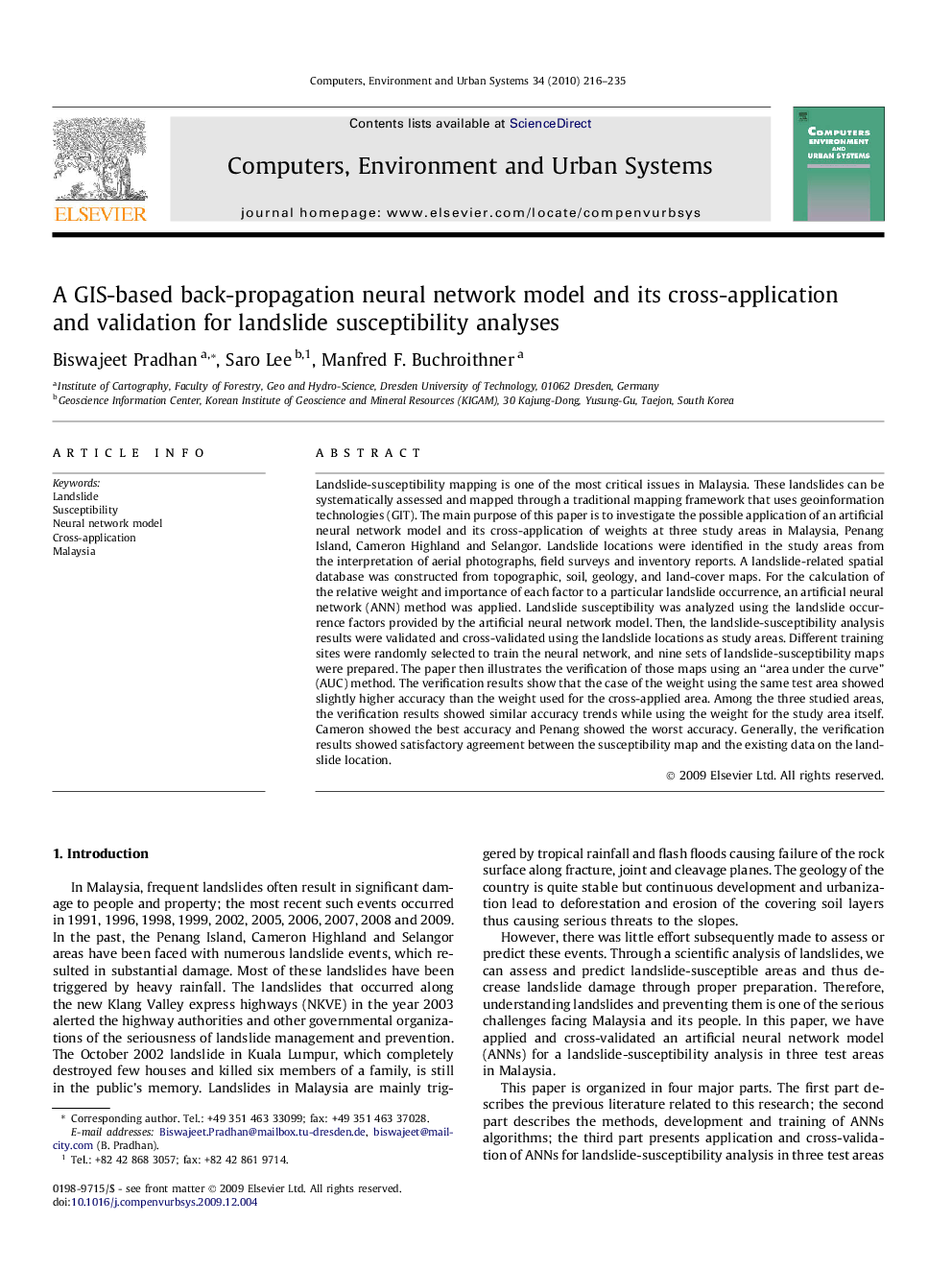| Article ID | Journal | Published Year | Pages | File Type |
|---|---|---|---|---|
| 506514 | Computers, Environment and Urban Systems | 2010 | 20 Pages |
Landslide-susceptibility mapping is one of the most critical issues in Malaysia. These landslides can be systematically assessed and mapped through a traditional mapping framework that uses geoinformation technologies (GIT). The main purpose of this paper is to investigate the possible application of an artificial neural network model and its cross-application of weights at three study areas in Malaysia, Penang Island, Cameron Highland and Selangor. Landslide locations were identified in the study areas from the interpretation of aerial photographs, field surveys and inventory reports. A landslide-related spatial database was constructed from topographic, soil, geology, and land-cover maps. For the calculation of the relative weight and importance of each factor to a particular landslide occurrence, an artificial neural network (ANN) method was applied. Landslide susceptibility was analyzed using the landslide occurrence factors provided by the artificial neural network model. Then, the landslide-susceptibility analysis results were validated and cross-validated using the landslide locations as study areas. Different training sites were randomly selected to train the neural network, and nine sets of landslide-susceptibility maps were prepared. The paper then illustrates the verification of those maps using an “area under the curve” (AUC) method. The verification results show that the case of the weight using the same test area showed slightly higher accuracy than the weight used for the cross-applied area. Among the three studied areas, the verification results showed similar accuracy trends while using the weight for the study area itself. Cameron showed the best accuracy and Penang showed the worst accuracy. Generally, the verification results showed satisfactory agreement between the susceptibility map and the existing data on the landslide location.
